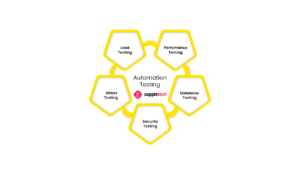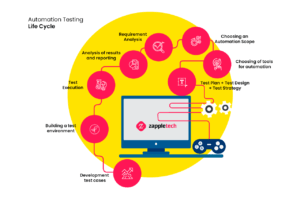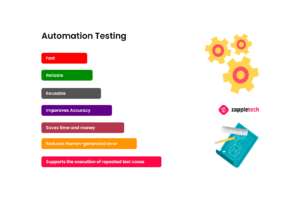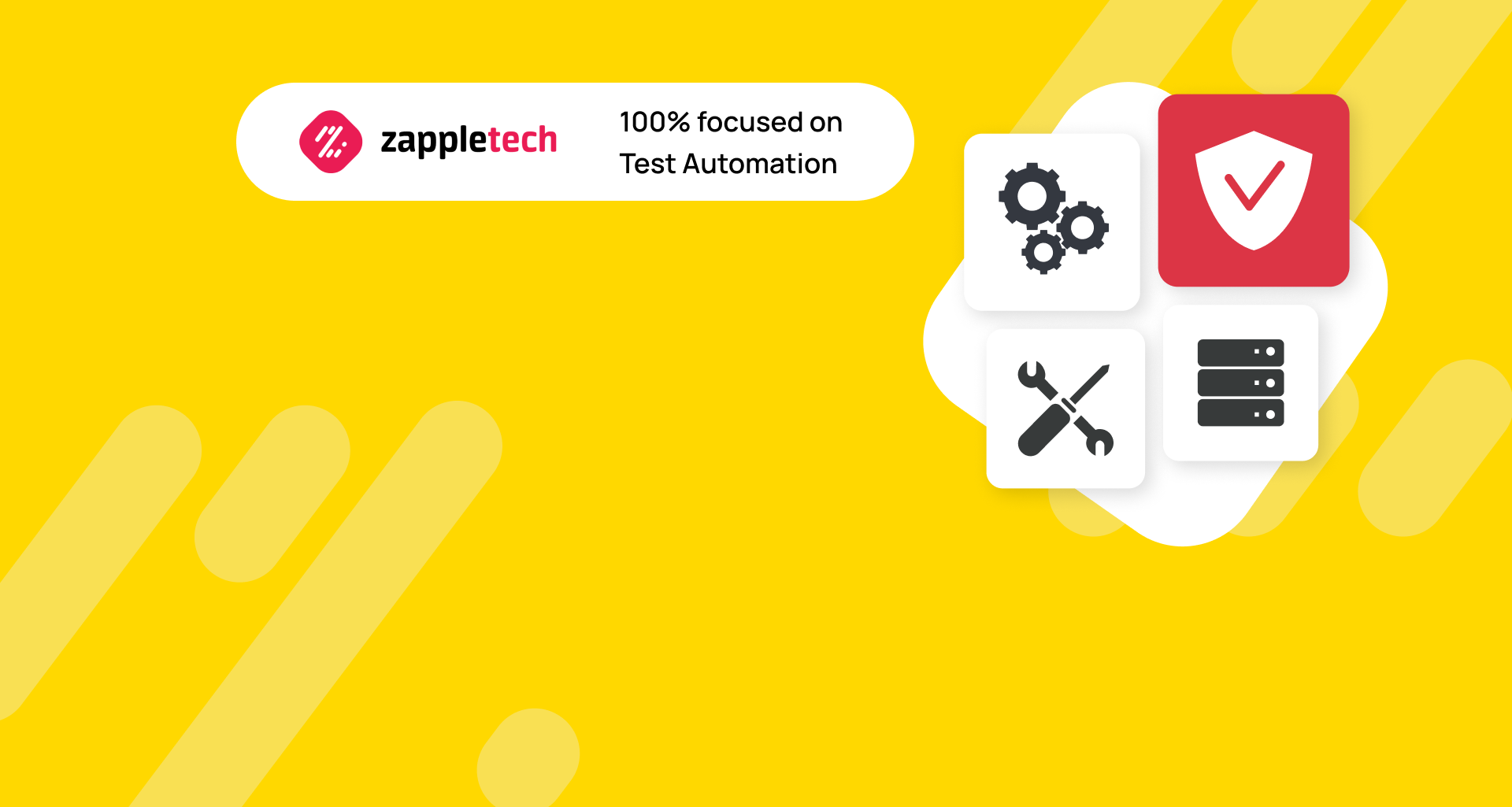According to InfoWorld’s survey, companies that automate more than 50% of their tests experience significantly accelerated test cycles and enhanced test coverage. This approach allows them to detect errors much earlier compared to relying solely on manual methods. Consequently, they can bring their software products to market faster than competitors while maintaining high quality and minimizing costs and effort. So, what exactly is the Automation Testing Life Cycle (ATLC)?
The Automation Testing Life Cycle (ATLC) encompasses the entire process of automating software testing, from initial planning and preparation through to execution, analysis, and maintenance of automated tests. This systematic approach ensures that automated testing is integrated seamlessly into the software development lifecycle (SDLC), optimizing efficiency and effectiveness.
Start with a clear strategy for automation that aligns with your project’s goals and requirements. Prioritize tests based on complexity and potential impact, ensuring optimal resource allocation and efficiency.Mykhailo PoliarushCEO, ZappleTech Inc.
Automation testing begins with strategizing, where tests are selected based on criteria such as complexity, frequency of use, and criticality. Test cases are then designed and developed using automation frameworks and tools that best suit the project’s requirements and technology stack. Next comes the implementation phase, where the automated test scripts are created and reviewed for accuracy and completeness.
Once the scripts are ready, they are executed either manually or through continuous integration tools to ensure consistent and reliable results across different environments. Test results are analyzed to identify defects and areas for improvement, enabling teams to iterate and refine their testing strategies as needed.
Maintenance is a crucial aspect of the ATLC, involving updates to accommodate changes in the application under test or its environment. This ensures that automated tests remain relevant and effective throughout the software’s lifecycle.
Table of Contents
ATLC features
The goal of automation within the Automation Testing Life Cycle (ATLC) is to automate standard, repetitive tasks of a QA team, thereby eliminating routine work and optimizing project schedules in IT environments. However, complete reliance on automation isn’t advisable, as over-automation can potentially introduce serious issues. Therefore, a balanced approach is key, where automation and manual methods are judiciously combined based on the complexity and specifics of testing procedures.
ATLC features a structured approach to testing that involves tracking changes throughout a project lifecycle, from initial familiarization with business rules to final result analysis. This process is divided into sequential stages, each assigned with a distinct set of tasks and priorities. The orchestrated combination of these planned activities defines the Automation Testing Life Cycle (ATLC).
By strategically integrating automation into these stages, teams can achieve consistent testing results, improve efficiency, and ensure comprehensive test coverage while adapting to evolving project requirements. This methodical approach not only enhances the quality of software products but also supports faster delivery cycles, aligning with the dynamic demands of modern software development practices.
Following ATLC allows you to:
- Standardize the structure, all team actions, and the results obtained.
- Plan, distribute tasks among team members, and make changes to the project schedule efficiently.
- Control the quality of tasks and track the progress of the project.
- Ensure transparency of processes for all interested parties: performers, managers, partners, and the customer.
- Keep in touch with the customer, notifying them of the intermediate test results.
- Get the job done faster, ensuring that your product is released to the market on time.
- Minimize the risks and costs of launching the project thanks to the detailed study of each stage.
All labor-intensive processes have different sequences of steps/phases, including development, where testing is an integral part. In general, ATLC allows you to identify the critical points in the automation process in advance and focus on the actual problems.

The 8 key steps of ATLC
1. Requirement analysis
The first phase of the Automation Testing Life Cycle (ATLC), known as Requirement Analysis, involves analyzing requirements, functions, and rules to determine the feasibility and scope of automation. Testers aim to understand the conditions under which the new software will operate and the specific problems it needs to address.
During Requirement Analysis, testers delve into architecture requirements, which outline how each feature should be developed. They also scrutinize system requirements, encompassing both functional and non-functional specifications that form the basis of product development and testing.
A crucial aspect of Requirement Analysis is conducting a feasibility study of testing methods to determine which aspects can and should be automated. This evaluation is consolidated in a Requirements Traceability Matrix, which tracks how each requirement will be tested throughout the ATLC.
In cases where essential information is lacking, the testing team collaborates closely with customers or developers to seek clarifications and ensure comprehensive understanding before proceeding with automation efforts. This meticulous approach during Requirement Analysis sets the stage for efficient and effective automation testing across the entire software development lifecycle.
Stay updated with the latest automation tools, techniques, and best practices. Embrace a culture of continuous improvement to refine your testing processes and maximize the benefits of automation throughout the lifecycle.Sergey AlmyashevCOO, ZappleTech Inc.
2. Choosing an automation scope
After collecting, organizing, and analyzing the data, testers enter the crucial stage of choosing the Automation Testing Life Cycle (ATLC) scope. Here, they meticulously determine the types and extent of tests suitable for automation. As emphasized earlier, not all tests are suitable for automation due to factors like complexity, frequency of execution, and return on investment. Hence, this phase demands careful consideration and analysis.
Testers evaluate various criteria to decide which tests should be automated. Critical factors include the stability of the application’s functionalities, the likelihood of regression issues, and the repetitive nature of test scenarios. Tests that are stable, repetitive, and prone to human error are prime candidates for automation within the automation testing life cycle (ATLC).
By selecting the right tests for automation, teams can optimize their testing efforts, streamline workflows, and improve overall software quality. This strategic approach ensures that automation complements manual testing efforts effectively, maximizing efficiency and delivering reliable results throughout the software development lifecycle.
The following are subject to automation:
- unit tests aimed at checking the functionality of a part of the code;
- priority functions with a high probability of failures;
- regression tests that check the correctness of functions;
- integration tests that check the work of individual modules as a group;
- performance tests for which manual methods are not applied;
- repetitive test scripts that run frequently;
- tests of basic functionality regarding simple functions.

User experience (UX) cannot be automated, as many aspects of it require purely manual verification, for example, registration on the site. Testers do not recommend automating testing of functions that have no value, as well as functionality at the development stage. Tests without clear results and those that are performed half-manually are also not subject to automation.
3. Choice of tools
The choice of tools in the Automation Testing Life Cycle (ATLC) significantly impacts the accuracy and efficiency of testing efforts, making this stage crucial within the entire cycle. When selecting tools, testers begin by evaluating several key factors:
- The requirements established at the first stage;
- the budget allocated by the client for testing;
- technologies on which the project is created;
- the type and complexity of the tests;
- the competencies of the testing team;
- a support team that can provide assistance in case of problems
Selenium is a common tool for testing web applications on different platforms (Windows, Mac, Linux) and browsers. It is the basis for many other software testing tools. In terms of flexibility, it is similar to Appium, a tool for working with hybrid and mobile (iOS, Android) web-format applications. Another versatile tool is Ranorex, suitable for mobile, web, and desktop products.
Other popular tools valued by testers for their convenience and reliability: Apache, Katalon Studio, Cucumber, Leapwork, Subject7, HPE, TestComplete, etc. Each testing team has different preferred tools.
4. Planning
The next step is drawing up a plan/strategy. Testers determine how the automation goal can be achieved, considering the characteristics of the previously selected tools. In simple words, all the ideas obtained in the previous stages are combined and documented during planning.
The plan deals with all aspects of testing: standards for conducting procedures, data requirements, hardware and software, bug tracking system, change management, and environment for finding bugs. Next, risks and limitations associated with the procedure are recorded, and a test calendar is drawn up, which can subsequently be adjusted. After this, the plan is agreed upon with the leaders on the part of both the contractor and the customer.
5. Creating test cases
Moving forward from defining a testing strategy within the Automation Testing Life Cycle (ATLC), the next critical stage involves the meticulous creation of test cases and scripts. This phase marks a detailed elaboration of all selected tests slated for automation, focusing on defining comprehensive methodologies.
Creating test cases within the ATLC encompasses several pivotal steps. Initially, testers meticulously design each test case, delineating specific steps, inputs, and anticipated outputs. This ensures clarity and precision in executing tests across diverse scenarios.
When you have a testing strategy, you can go to another crucial stage, writing test cases and scripts. It implies a detailed elaboration of all tests that have been chosen for automation and the selection of general working methods.
Characteristics of test cases:
- simplicity and clarity for all team members;
- contrast to other test cases;
- maximum compliance with the established requirements;
- identifiability and reusability;
- structuredness and documentability.
Upon the work completion, the finished test cases must be approved by the head. As a result, they are all combined into test units, which will be run later.

6. Building a test environment
This step is very valuable because the QA team cannot start testing without a suitable environment. It implies setting up the software and hardware environment to execute test cases. The main goal is to create a test environment that will cover all the necessary scenarios.
Experts make decisions about configurations and the setup of support items for test execution. The test environment configuration should simulate a production environment where any issues related to the relevant area can be identified.
The configuration concerns the following areas: test data, system, modules, applications, database server, front-end work environment, client OS, browser, hardware (server OS), network (Internet, LAN Wifi, private network), and documentation (installation guides, configuration, etc.). Testers provide the setup with other specialized IT professionals, including those who develop and administer the project.
7. Test execution
8. Analysis of results and reporting
As the Automation Testing Life Cycle (ATLC) nears its conclusion, the final stages involve comprehensive analysis of test results and reporting. This critical phase encompasses the collection and thorough examination of all testing data, aiming to pinpoint areas where issues have surfaced most frequently. This analysis serves as the basis for discussing the necessity and scope of additional testing efforts.
The analysis of results within the ATLC is pivotal for identifying patterns of defects, assessing the overall quality of the software, and determining potential risks. It provides valuable insights into which aspects of the application require further refinement or attention, guiding subsequent development and testing phases.
Reports generated from this analysis are essential deliverables that convey findings and assessments to all stakeholders involved. These reports not only highlight areas requiring improvement but also outline strategies to mitigate risks and enhance overall software quality. They serve as a crucial communication tool, ensuring that clients and project teams have a clear understanding of testing outcomes and actionable insights for future iterations.
By systematically analyzing results and providing comprehensive reporting within the Automation Testing Life Cycle (ATLC), teams ensure transparency, facilitate informed decision-making, and uphold standards of excellence in software development. This structured approach not only validates the effectiveness of automated testing but also supports continuous improvement and optimization of testing strategies across the software lifecycle.

What are the benefits of automated testing:
- Simulation of a high load, which almost corresponds to a real situation, including in multi-user conditions.
- The ability to test the app in several environments and various configurations.
- Eliminate the routine since the code for the script is written once, and it runs automatically on schedule.
- High execution speed: in 99% of cases, the bot passes the test faster than a manual tester.
- Ability to use the code repeatedly, including when introducing new functionality.

So, thorough preparation for testing and its correct implementation allows you to speed up finding errors several times without compromising quality. Ready-made scripts are launched without additional modifications, so the risk of the human factor is completely eliminated. All this makes automated testing an excellent tool to control the quality of software products.
Conclusion
In conclusion, the Automation Testing Life Cycle (ATLC) represents a systematic and strategic approach to software testing that leverages automation to enhance efficiency, reliability, and quality throughout the development process. Beginning with requirement analysis and tool selection, followed by test case creation, execution, and results analysis, each phase within the (ATLC) plays a crucial role in ensuring thorough testing coverage and timely delivery of high-quality software products.
By integrating automation alongside manual testing, teams can achieve faster test execution, broader test coverage, and more reliable results. This approach accelerates the software development lifecycle and mitigates risks by identifying defects early and promptly facilitating their resolution.
Foster open communication and collaboration among all stakeholders—testers, developers, and clients. Ensure that everyone understands the goals, results, and implications of automated testing to drive collective success and quality assurance.Mikhail BodnarchukCDO, ZappleTech Inc.
Moreover, the Automation Testing Life Cycle facilitates continuous improvement by systematically analyzing test results and generating insightful reports. These reports not only inform stakeholders about the software’s current state but also provide actionable insights for future enhancements and optimizations.
Overall, embracing the (ATLC) empowers organizations to streamline testing processes, improve software quality, and effectively meet the evolving demands of modern software development practices. By adopting a structured and comprehensive approach to automation testing, businesses can achieve competitive advantages, deliver robust software solutions, and drive innovation in their respective industries.







